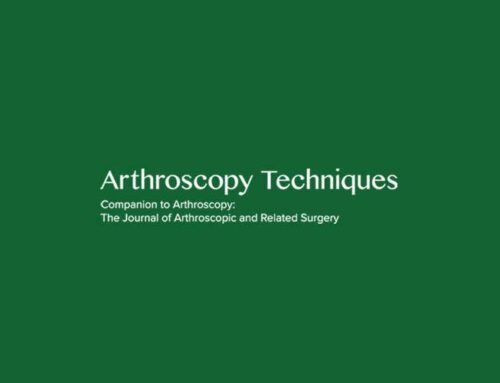Authors
Ukwuani GC, Waterman BR, Nwachukwu BU, Beck EC, Kunze KN, Harris JD, Nho SJ
Abstract
PURPOSE:
To investigate the rate of return to dance and factors influencing this primary outcome after hip arthroscopy for the treatment of femoroacetabular impingement syndrome.
METHODS:
A consecutive series of self-identified dancers with femoroacetabular impingement syndrome was included. To assess for the impact of hypermobility on outcomes, patients were classified as having either generalized joint laxity (GJL) or no GJL based on the Beighton-Horan Joint Mobility Index. A return-to-dance survey, the modified Harris Hip Score, and the Hip Outcome Score (HOS)-Activities of Daily Living and HOS-Sports-Specific subscales were collected preoperatively and postoperatively at 6, 12, 24, and 36 months. The preoperative-to-postoperative outcome score change was compared using the minimal clinically important difference and patient acceptable symptomatic state. Return to dance was evaluated regarding (1) return to any dance activity, (2) return to prior level of dance, and (3) number of hours of dance participation after surgery. Clinical and demographic predictors and return to dance were analyzed using univariate or bivariate analysis where appropriate.
RESULTS:
The study included 64 consecutive dancers (62 female and 2 male patients) (mean age, 22.3 ± 9.4 years; body mass index, 22.8 ± 4.1) with a mean follow-up period of 23.0 months. Postoperatively, 62 patients (97%) returned to dance at an average of 6.9 ± 2.9 months; 40 patients (62.5%) reported that they returned to a better level of participation, whereas 20 dancers (31%) returned to the same level of participation. Statistically significant increases were observed for the HOS-Activities of Daily Living subscale (60.5 ± 19.5 vs 92.4 ± 11.8, P < .001), HOS-Sports-Specific subscale (40.3 ± 20.3 vs 83.5 ± 19.4, P < .001), and modified Harris Hip Score (57.0 ± 13.6 vs 86.6 ± 13.9, P < .001). There was, however, a significant decrease in the number of hours of dance postoperatively: 11.5 ± 8.2 h/wk preoperatively versus 9.0 ± 7.3 h/wk postoperatively (P = .041). All postoperative hip outcome measures showed statistically significant (P < .001) and clinically relevant improvements. Patient-reported outcomes and return time showed no significant differences between the patient groups with GJL and without GJL (P = .1 and P = .489, respectively). For competitive dancers, a correlation was shown with a shorter time to return to dance (r2 = 0.45, P = .001), but there were no significant differences by skill level in patient-reported outcomes or dance hours.
CONCLUSIONS:
After hip arthroscopy, 97% of dancers returned to dance at an average of 6.9 months, with most dancers dancing at a level higher than their preoperative status. Dance experience level was the only significant factor influencing return-to-dance outcomes, with competitive dancers showing a faster return to dancing.conclusion LEVEL OF EVIDENCE: Level IV, therapeutic case series.



